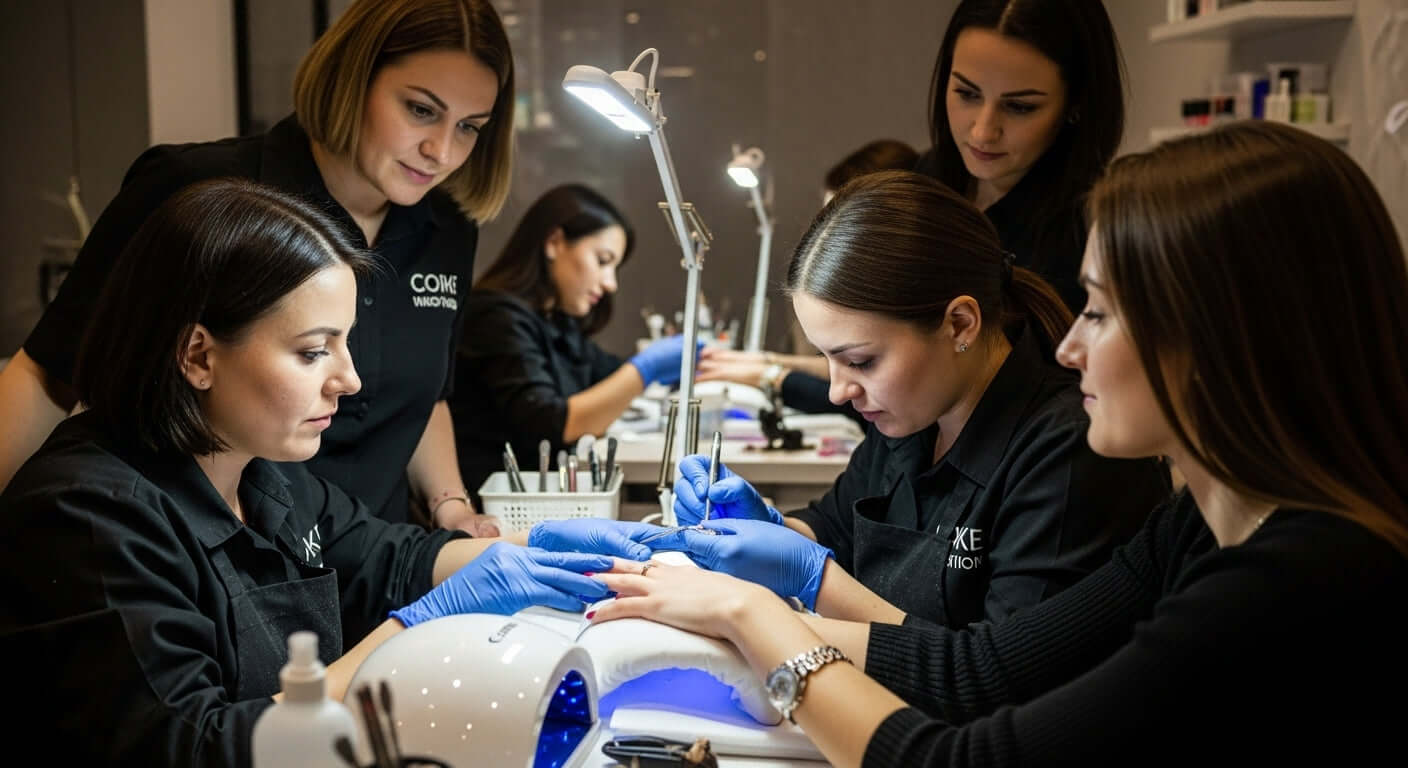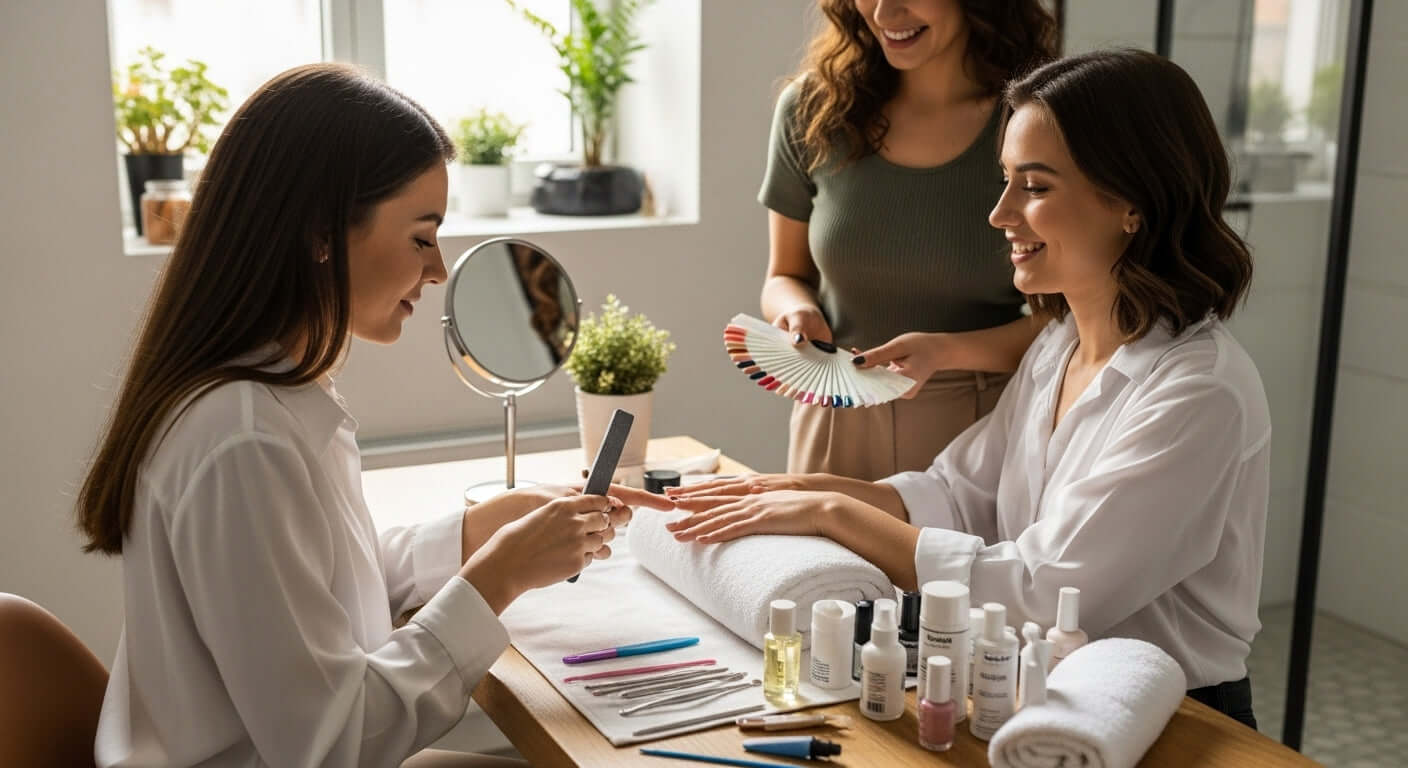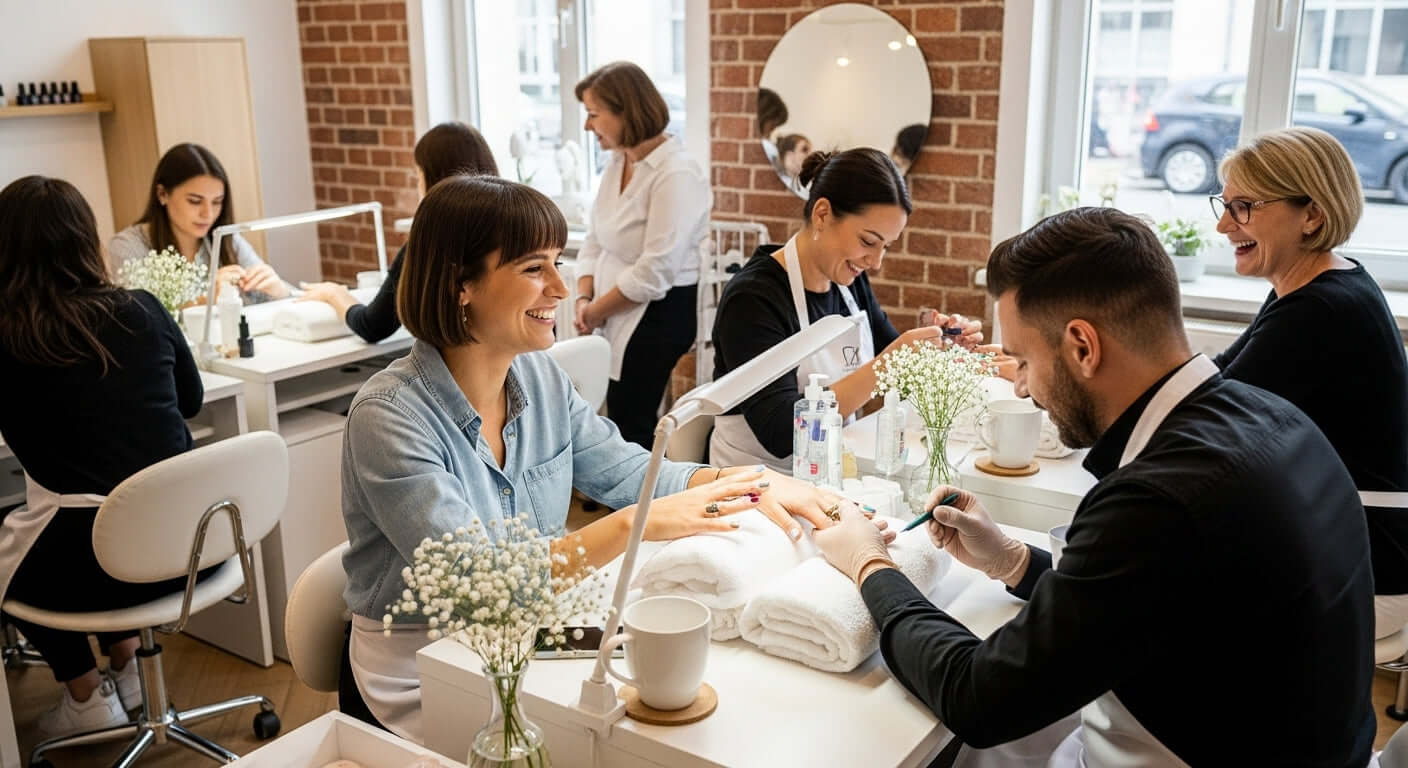UV lamps have become indispensable in modern nail care and cosmetics. What often seems like a simple device actually has surprisingly many applications and contains special technical secrets. Hard to believe, but a layer of nail polish can completely cure under a UV lamp in just 30 to 60 seconds, while the same process without the lamp could take up to an hour. And the exciting part is, UV lamps are used not only for shiny fingernails but also for disinfection and even medical treatment.
Table of contents
Brief summary
| Takeaway | Explanation |
| UV lamps sterilize effectively | They are suitable for disinfecting surfaces, liquids, and gases in medical and cosmetic applications. |
| UV lamp indispensable for nail care | In gel and shellac techniques, they enable fast and precise curing of nail polishes. |
| Safety precautions when using UV | Protect skin and eyes with gloves and sunscreen to avoid health risks. |
| UV radiation has different wavelengths | UV-A, -B, and -C rays differ in their energy levels and applications, so selection is crucial. |
| Consider potential health risks | Excessive UV exposure can increase risks of skin cancer and signs of skin aging, so moderate use is important. |
What is a UV lamp? Basic definitions
A UV lamp is a special technical device that produces ultraviolet light and is used in various fields. Essentially, it is a light source that emits light radiation in the ultraviolet spectrum, which is not visible to the naked eye.
For better clarity, here is a tabular comparison of the different types of ultraviolet radiation and their properties.
| UV Type | Wavelength Range | Energy Level | Application |
| UV-A | 315-400 nm | Low | Cosmetics, Nail Design, Medicine |
| UV-B | 280-315 nm | Medium | Medical Treatment, Vitamin D |
| UV-C | 100-280 nm | High | Disinfection, Water Treatment |
The Scientific Basis
Ultraviolet light lies in the electromagnetic spectrum between visible light and X-rays. According to the definition by University of Münster, UV lamps are used to initiate photochemical reactions. The radiation has different energy levels that act differently depending on the area of application:
-
Short-wave UV Light (UV-C): Strongly Germicidal
-
Medium-wave UV Light (UV-B): Limited Penetration Power
-
Long-wave UV Light (UV-A): Lowest Energy
Practical Areas of Application
UV lamps are used in numerous fields. Lenntech explains that they are used for disinfecting surfaces, liquids, and gases. Typical areas of application include:
-
Medical Sterilization
-
Water Treatment
-
Nail Polish Drying
-
Industrial Curing Processes
Important to know: UV lamps should always be used with caution and in compliance with safety regulations, as the radiation can pose health risks upon direct contact.
Whether for professional nail care or scientific applications – UV lamps are versatile devices with precise technical characteristics.
The Importance of the UV Lamp in Nail Care
UV lamps play a central role in modern nail care and are mainly used in gel and shellac techniques. They enable fast and efficient curing of nail polishes and provide nail designers with a precise method for sealing polish.
Technology and Functionality
In nail care, special UV or LED lamps are used that emit targeted ultraviolet light. This light initiates a photochemical reaction in special nail polishes, causing them to fully cure within seconds.
Benefits for nail care
Using UV lamps offers several decisive advantages:
-
Fast drying: Polish cures in 30-60 seconds
-
Long-lasting shine: Sealed nails stay perfect for up to two weeks
-
Precise coloring: Colors appear more intense and even
If you want to learn more about professional nail care techniques, we recommend our detailed guide.
Important: When using UV lamps, you should always wear hand protection and minimize exposure of your skin. The quality of the lamp and protective measures are crucial for safe nail design.
How does a UV lamp work? Scientific basics
UV lamps are based on complex physical principles of light generation and electromagnetic radiation.
They convert electrical energy into targeted ultraviolet radiation, which exhibits different properties depending on design and application.
Technical generation of UV radiation
The generation of UV light is done by special lamps based on different technologies. The Fraunhofer Institute explains that there are two primary methods: gas discharge lamps and solid-state light sources like LED systems. Gas discharge lamps use electrical energy to excite mercury vapor or other noble gases to emit light, while LED systems use semiconductor materials.
Radiation spectrum and mode of action
The UV spectrum includes different wavelength ranges with varying energy levels:
-
UV-A radiation (315-400 nm): Lowest energy, low penetration
-
UV-B radiation (280-315 nm): Medium energy, stronger effect
-
UV-C radiation (100-280 nm): Highest energy, strongly germicidal
If you want to learn more about the different nail polish techniques, we recommend our informative guide.
Important: The choice of the right UV lamp strongly depends on the specific application area. Industrial, medical, and cosmetic applications each require different radiation intensities and safety devices.
Practical applications of UV lamps in beauty
UV lamps have a versatile significance in modern beauty care and are increasingly used in various areas of cosmetics and nail care. They enable precise and efficient treatments that complement or replace traditional methods.
Nail polish and nail design
In nail cosmetics, UV lamps play a central role in curing gel and shellac polishes. The Federal Office for Radiation Protection emphasizes that modern UV devices are designed to enable fast and long-lasting nail designs. The UV technology ensures even polymerization of the polish layers and guarantees a perfect, glossy surface.
Skin treatments and cosmetics
In addition to nail care, UV lamps are also used in various cosmetic treatments:
-
Disinfection: Professional beauty salons use UV light to sterilize work tools
-
Treatment of skin impurities: Controlled UV irradiation can reduce acne and other skin problems
-
Vitamin D production: Special UV lamps can support the body's own vitamin D synthesis
If you want to learn more about our professional UV nail polish techniques, we recommend our detailed guide.
Important: For all UV applications, you should minimize your skin exposure and use protective measures such as sunscreen or gloves. Professional advice is generally recommended.
Risks and benefits of using UV lamps
UV lamps offer both significant advantages and potential risks that must be carefully weighed. Balanced use requires solid knowledge and responsible application.
The following provides a clear comparison of the main advantages and potential risks of using UV lamps.
| Category | Advantages | Risks and disadvantages |
| Nail care | Very fast drying, long-lasting shine | Skin cancer risk, premature skin aging |
| Disinfection | Effective germ killing, diverse applications | Eye irritation from unintended exposure |
| Skin treatment | Support of vitamin D production, acne therapy | Damage to the skin barrier from overexposure |
| Cosmetics in general | Precise, professional results | Protective measures necessary |
Health aspects
The University of Natural Resources and Life Sciences, Vienna conducts intensive research on the effects of UV radiation and clarifies that the evaluation of UV lamps is complex. While controlled UV exposure can support important physiological processes, excessive radiation carries health risks.
Overview of advantages and risks
The use of UV lamps involves various aspects:
Advantages:
-
Fast nail polish drying
-
Effective disinfection of surfaces
-
Support of vitamin D production
-
Precise cosmetic treatments
Potential risks:
-
Increased skin cancer risk with intense exposure
-
Possible damage to the skin barrier
-
Premature skin aging
-
Eye irritation
If you want to learn more about our safe UV nail polish techniques, we recommend our detailed guide.
Important: Protect your skin with targeted measures such as sunscreen, gloves, and limited exposure time. Professional advice can minimize individual risks.
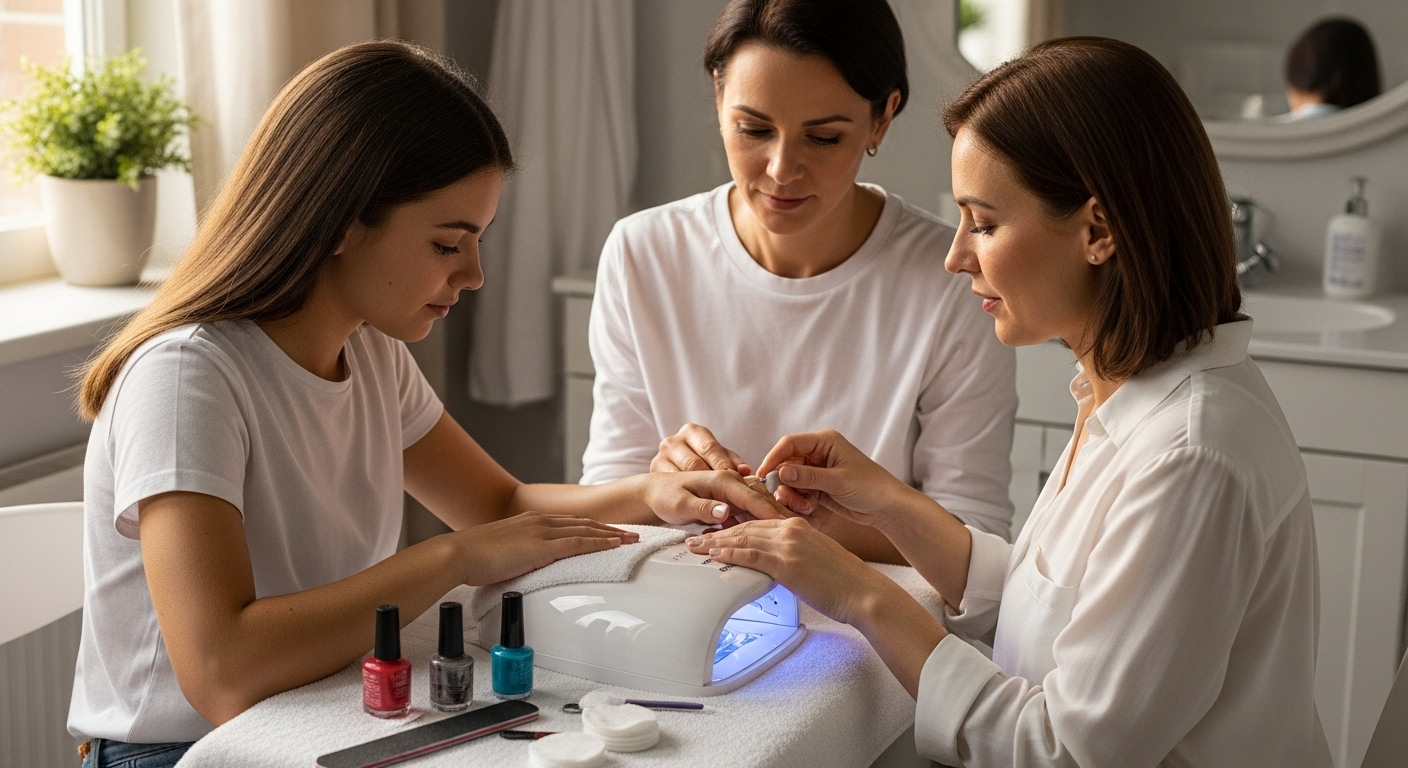
Experience the benefits of modern UV lamps – beauty and care start at home
You have now learned how a UV lamp works and why UV light is indispensable for perfect, long-lasting nails. But do you sometimes feel overwhelmed when choosing the right products and wonder how to achieve professional results at home? At Nailtime, you will find exactly the solution for your challenges. Our Duplex Starter Sets provide everything you need for your personal beauty ritual, including an LED-UV lamp and high-quality UV nail polish. Transform your care experience into a relaxing moment of well-being – simple and effective.
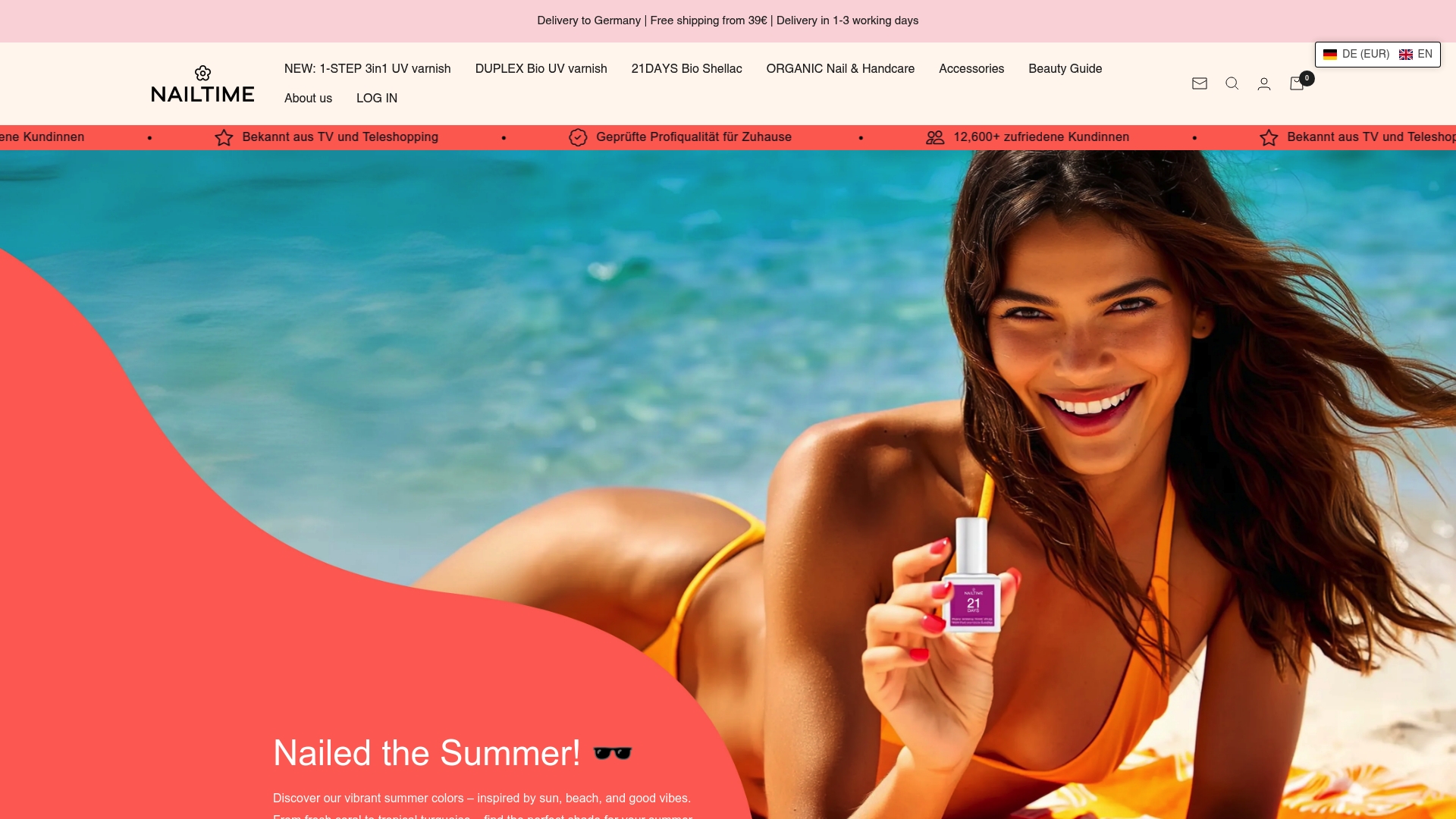
Don't wait any longer and experience for yourself how comfortable and safe it is to get brilliant nails. Discover now the wide selection of 1-STEP UV POLISH or take a look at our Duplex Sets for the perfect manicure. Bring your personal nail studio home with Nailtime and enjoy beautiful, well-groomed hands day after day.
Frequently Asked Questions
What is a UV lamp?
A UV lamp is a technical device that produces ultraviolet light and is used in various fields such as medicine, water treatment, and nail care.
How does a UV lamp work?
UV lamps convert electrical energy into ultraviolet radiation, which can trigger photochemical reactions. They use technologies such as gas discharge or LED to generate UV light.
What are the benefits of using UV lamps in nail care?
Using UV lamps in nail care allows for quick drying of nail polish in 30-60 seconds, ensures long-lasting shine, and precise color application.
Are there health risks associated with using UV lamps?
Yes, excessive exposure to UV radiation can pose health risks such as skin cancer, skin aging, and eye irritation. Protective measures are therefore important.

